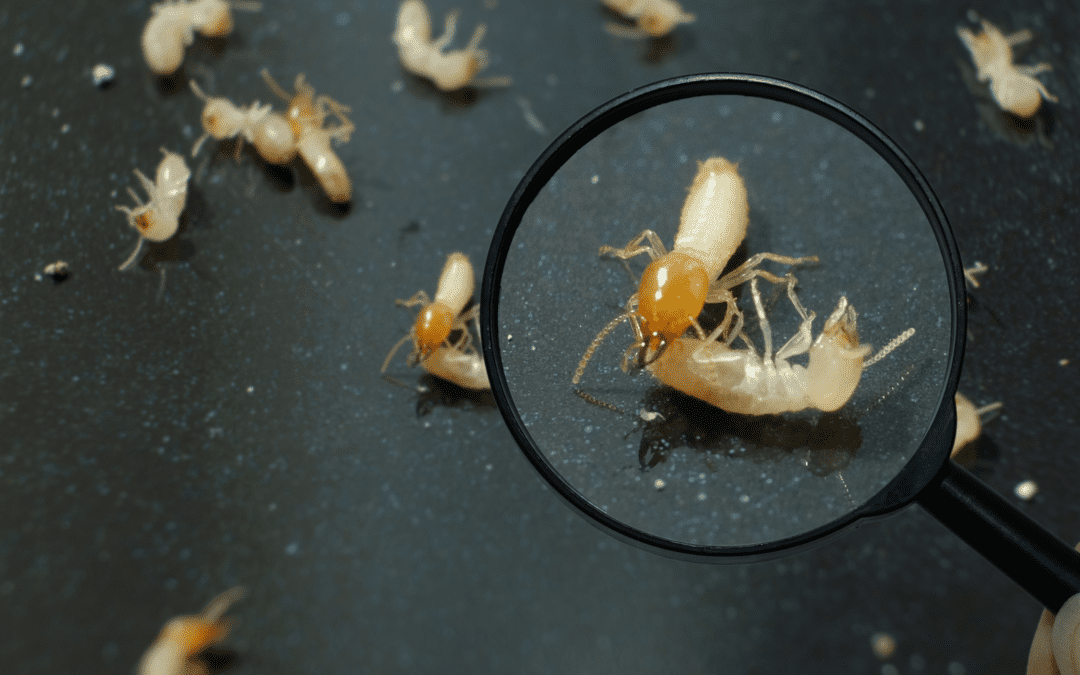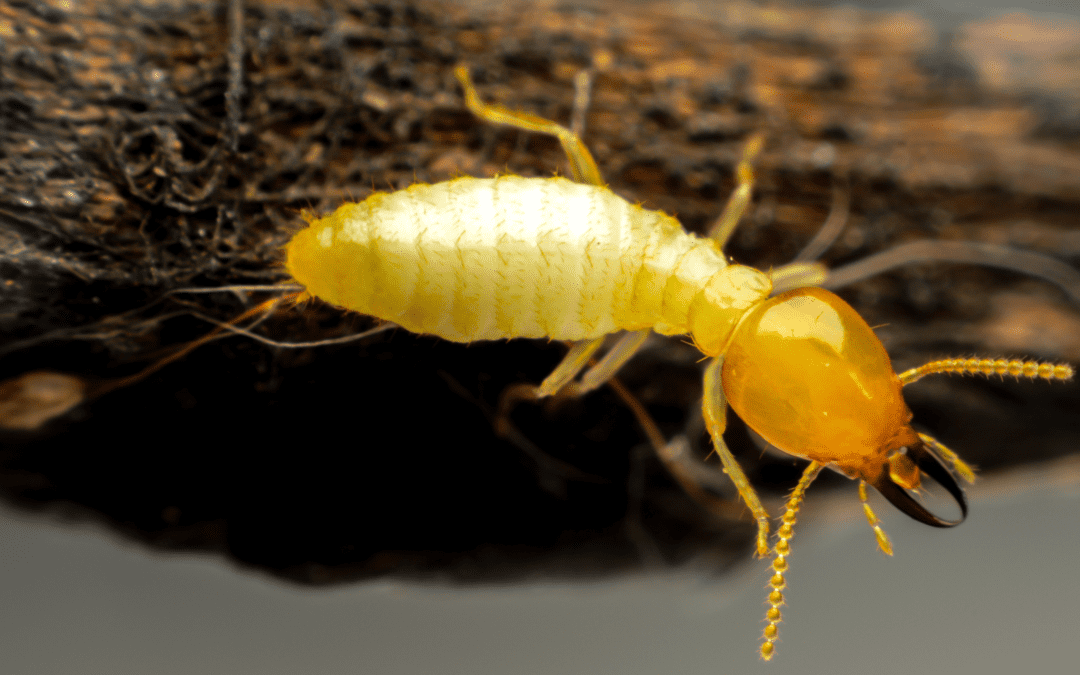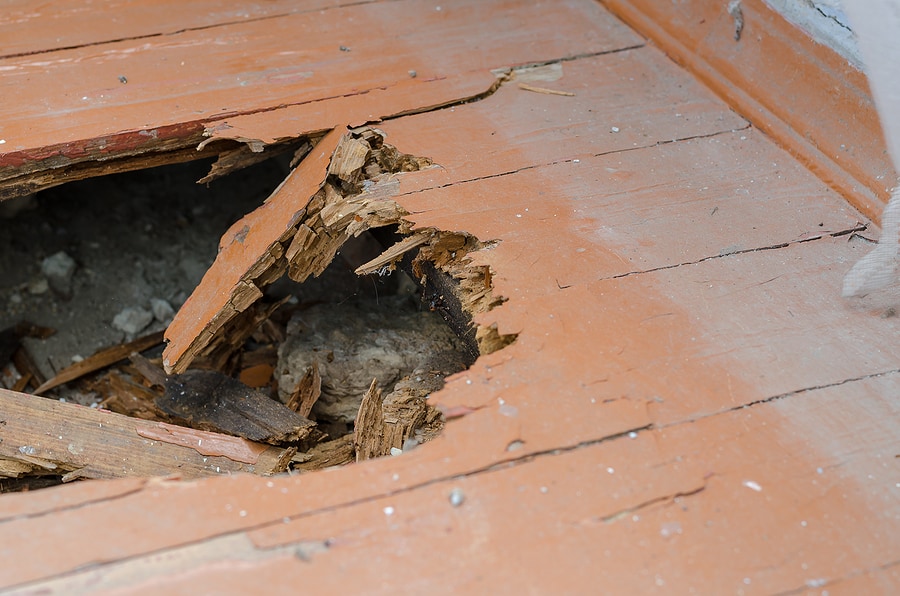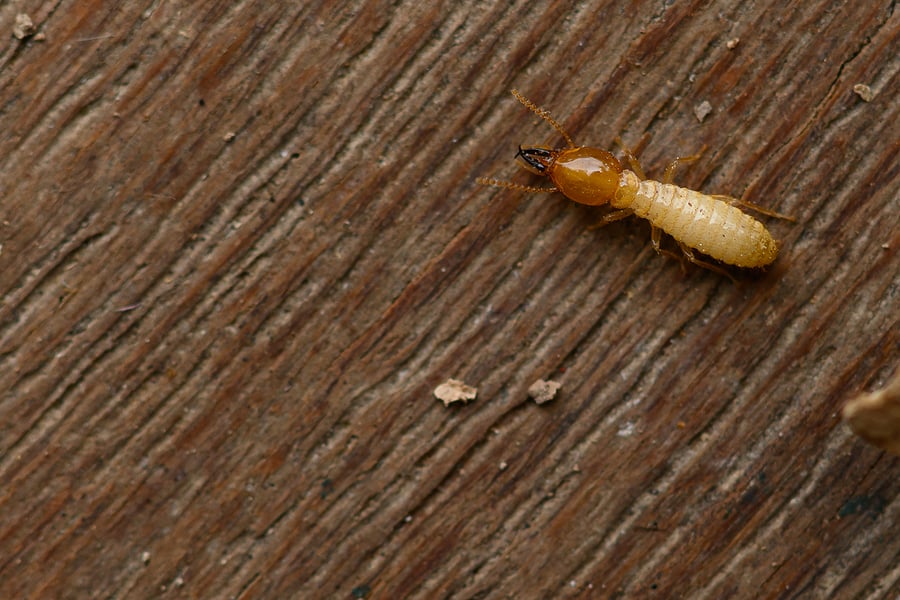READY TO GET STARTED?
REQUEST A FREE ESTIMATE
Fill out the form below or call (888) 466-7849 for a free, no-obligation estimate.

Drywood termites seek dry wood as a food source and will destroy your home in the process. These termites differ from other species, such as subterranean termites, since they tend to create their colonies in wood, instead of in the ground, and need little moisture to survive. Unlike other species, these termites can create devasting damage to homes, excavating wood and ruining it. To prevent them, it’s best to place preventative measures throughout your property.
The first step in preventing drywood termites is inspecting your home. By examining your home, you can get a good idea of what repairs are needed or discover that a termite infestation has established. When inspecting, write down everything you see that’s a concern; this will help overall when relaying to a pest professional. When checking the home’s interior, don’t forget to check in darker areas such as your crawl space, attic, and basements. Check around your baseboards, beams, or other wood materials. Likewise, look at any furniture or firewood inside the home too. As you are investigating the exterior of your home, be extra thorough, as these termites haven’t entered the home yet. Check your foundation, old trees, wooden sheds, and firewood.
Drywood termites are very small, ranging from 3/8 to ½ inch in length, allowing them to fit in the smallest hole or gap. If you find any openings leading into your home, it’s best to repair them immediately. Likewise, keeping your home’s attic and crawlspace well ventilated will help reduce moisture and the risk of a termite infestation. Consider encapsulating your crawlspace or insulating your attic.
Drywood termites are looking for any wood materials to inhabit. Make sure you place firewood at least 20 feet away from the home and raise it off the ground. Additionally, trim all shrubs, bushes, or other dense greenery so that it doesn’t touch the side of your home. If you have old trees, lumber, or tree stumps, consider removing them so these pests don’t infest and make their way inside your home.
Sometimes all the prevention in the world can’t stop termites from infesting homes. If a termite infestation has occurred, it’s best to call your local South Florida pest control company for extra help. A termite professional will provide you with a thorough termite inspection, a termite control plan based on your home’s needs, and recommendations on preventing them in the future.

Did you know that termites can cause extensive damage that can compromise the integrity of your home’s structure? Most homeowners insurance policies do not cover damage caused by termites or other pests. It’s imperative to have a termite control system in place for your Pompano Beach home, ensuring you and your family don’t have to worry about future damage. Let’s go over the many different types of termite treatments that will keep your home safe from structural damage!
A no-tent termite treatment is an excellent alternative to tent fumigation and can make treating your home for drywood termites a much easier process. This service addresses the unique behaviors of South Florida’s drywood termite species. Drywood termites create colonies in wood, with no connection to the ground necessary. They also need very little moisture and are often found in attic trusses, fascia boards, and soffit areas.
The benefits of “no tent” treatments are:
This termite service is best used when subterranean termites are the problem. It is an environmentally-friendly solution that involves placing green bait stations along the exterior perimeter of your home. The bait system doesn’t allow termites to molt, grow, or develop correctly, resulting in the total elimination of a termite colony. This baiting system helps to control subterranean termites, including the Formosan and Asian subterranean termite species.
Benefits of termite bait systems include:
Another way to combat subterranean termites is with liquid defense. This solution has proven to work in the most challenging situations, climates, and environments to eliminate subterranean colonies. This effective treatment requires a trench to be dug around the foundation perimeter, and then a termiticide is injected in proper intervals. It doesn’t kill the termites immediately but gives them time to bring it all the way back to the queen, ultimately eliminating the entire colony.
Benefits of liquid termite defense:
If you notice termite damage in or around your home or property, it’s best to contact your local Pompano Beach pest control company. They will be able to professionally assist you with your needs and find the best termite solution for you and your home.

Subterranean termites are considered to be the most damaging species of termite of all. These termites can damage the infrastructure of buildings and homes, putting them at risk for catastrophic consequences. Subterranean termites are found in every US state except Alaska.
It can be hard to detect subterranean termites as they eat wood from the inside out, often staying hidden until significant damage is done. They can enter through stucco, slab foundation, or any other hidden area with access to the structure. In order to prevent termites, it’s important to recognize the signs you may have an infestation. Here are 6 signs of subterranean termites:
One of the earliest signs of subterranean termites are termite swarms. Termite swarms emerge in the spring or early summer to reproduce and establish new colonies. Seeing a termite swarm indicates the presence of a nearby colony and indicate another colony will be starting up soon, increasing your risk of an infestation inside your home.
Mud tubes are another indication of subterranean termites. These are tubes they build to travel back and forth between your home and their nest. They protect them from damage and predators and allow them to accumulate moisture which termites need to survive. Mud tubes are typically about the size of a pencil and can be on walls, ceilings, floors, exterior surfaces, and on the sides of slabs.
Termites don’t just leave visual clues to their presence – you can also hear them! If a colony is larger and established, you may hear a faint clicking or knocking sound behind your walls or in other voids. The noise is the sound of soldier termites banging their heads against wood or vibrating their bodies to indicate danger is imminent. You can even sometimes hear the worker termites chewing through the wood of your home.
During an annual termite inspection, a termite control technician may tap the wooden surfaces of your home. If termite damage is present, you will hear a hollow or paper sound instead of a solid thud when tapped. You can also look for blistering or bubbling paint or other abnormalities in or near wood structures, including window and door trim. Termite damage can often mimic water damage.
When subterranean termites tunnel through wood, they push debris and waste out behind them through tiny openings. Frass is the name for this waste they excrete. If you notice pin-sized holes with small black marks or dark powdery substance around them, these indicate the presence of kick out holes made by the termites. You may also see piles of sawdust looking material which is the frass.
Floor, door, and window damage may also indicate a termite infestation. Sagging floors can indicate a well established infestation. Take note of any floors that buckle or sag and have them inspected. Doors and windows are another area that may indicate a problem. When these structures warp or don’t open and close smoothly, it can indicate the presence of termites, as well.
If you have any of these signs of termite damage, contact your local pest control company for a thorough inspection and treatment plan.

Termites are considered a year-round pest, causing significant destruction to homes and properties each year. Termite swarming season runs from spring to summer for most species. They use this time to reproduce and establish new colonies. Keep your home safe from termites this summer with these termite prevention tips.
Termite inspections aren’t limited to just your house. Make sure to inspect any wooden structures you have outside, as well, like wood furniture, swing sets, and decks. Termites will make small pinholes in the wood they are eating. If you find evidence of termites in your wooden structures, contact a termite control professional immediately. If your structures are not infested, seal them with an outdoor paint or sealant.
Installing a barrier to entry for termites will go a long way towards keeping them out of your home for good. There are two termite treatment options available for the perimeter of your home: bait stations and liquid soil treatments. In addition to these, performing routine inspections of the outside of your home, especially around foundations, is critical. If any gaps or cracks are found, seal or repair them immediately.
Stacks of firewood are an ideal food source for termites. Try not to stack firewood next to your home, shed or garage. Instead, store it several feet away from these structures. You should also elevate it, if possible, on either metal or concrete racks.
It’s important to keep your yard maintained to help prevent termites and other pests. Keep bushes and trees trimmed back so they are not touching your house or overhanging. Remove any dead or dying shrubs from your yard. Try to avoid using wooden mulch; instead, opt for recycled rubber mulch.
Termites don’t take days off so your home is always at risk. They can also go undetected for long periods of time, causing significant damage before you even realize they are there. A pest control professional can perform an annual termite inspection to help spot any signs of termites before they turn into a full blown termite infestation.
If you have a problem with termites or just want to get a head start on prevention, contact your local pest control company for a complete evaluation.
Why Do I Have Ants in My Kitchen?

It’s Termite Awareness Week, and termites are a known threat to southern homeowners. Termites can cause more than 5 million dollars in property damage throughout the United States, and it is normal for this damage not to be covered by homeowner’s insurance policies. Before the damage gets out of control, look for termite signs and consider getting a preventative termite treatment and warranty from professional help.
One of the first signs that termites are near is if you encounter swarmers near your home. Although swarmers do not cause wood damage, they do indicate that a colony is nearby. If you notice swarmers, it’s best to take immediate action and have a local termite control company take a look.
Another tell-tale sign that termites are close by is the presence of mud tubes or tunnels along the foundation of your home. Termites use mud tubes to keep moisture when traveling to and from their colony and your home.
Some other signs of termites that you may notice are:
Even if you do not find signs of termites, now is still the perfect time to get preventative termite protection! With the Sentricon Always Active bait system, you’ll experience 24/7 termite protection, annual inspections, a lifetime termite warranty, and more! Reach out to your local pest control company to help identify the type of termite and recommendations on the best treatment plan.